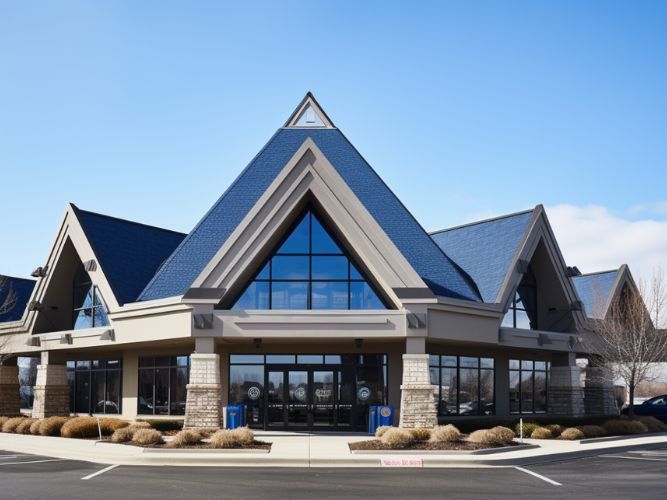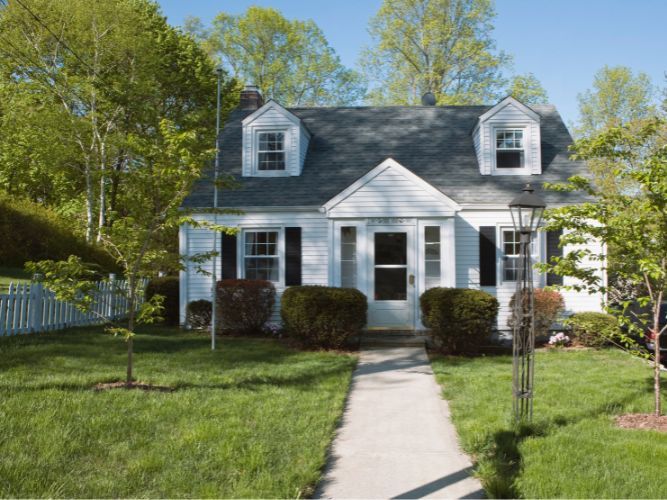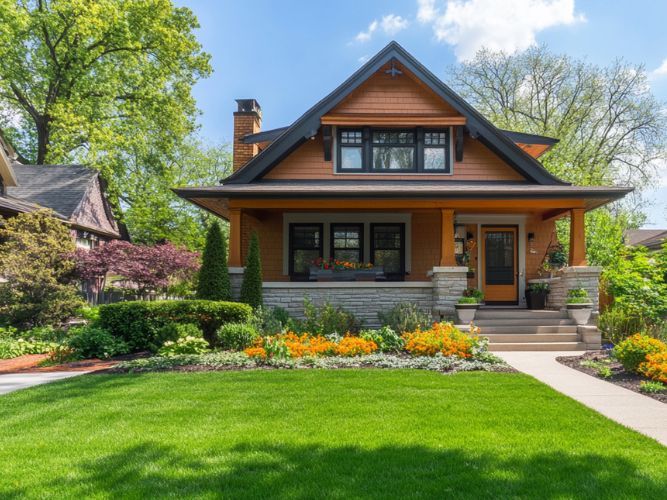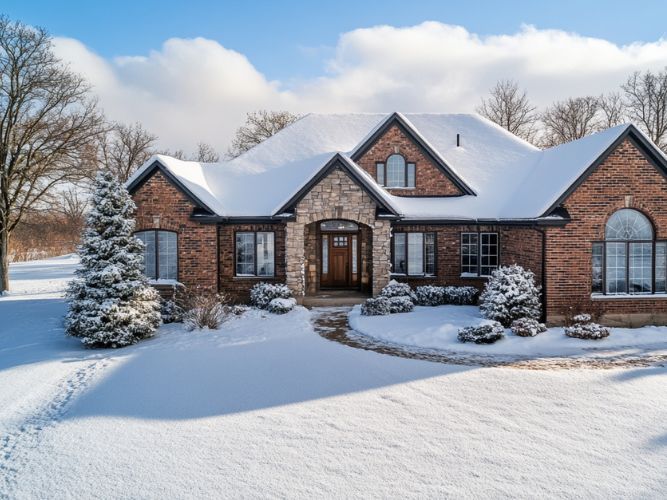Commercial Roofing: Maintenance Tips for a Longer Lifespan

It is essential for business owners to understand the vital importance of regular roof maintenance as it greatly impacts the longevity and value of their property. In this article, we look at the most commonly used materials for commercial roofing and the maintenance required to keep them in top condition. Also included is a seasonal maintenance checklist, so you can ensure your commercial roof lasts for as long as possible, as well as information on how to detect and address the most common roof issues.
Understanding the Importance of Regular Roof Maintenance For Your Business
Regular roof maintenance is an important consideration for any business building owner, as it can mean the difference between a safe and reliable roofing system and one that poses numerous safety risks and causes extensive damage. Moreover, roof maintenance can reduce the cost of regular repairs and ensure the roof lasts for many years to come.
When it comes to roof maintenance, timely inspections should take place at least twice a year, ideally during spring and autumn. This will allow the roofer to identify potential problems that could be easily avoided by fixing issues such as missing shingles and water pressure. Furthermore, during these inspections, the roofer can inspect the drainage system and the roof itself to ensure they are functioning as they should. Additionally, it is important to check for signs of wear and tear as well as any rotting and corrosion. By undertaking regular inspections, you can both establish your roof’s condition and pinpoint any areas which need immediate attention.
In addition to the regular inspections, other forms of roof maintenance should also be taken into consideration. For instance, it is important to clear the roof from debris such as leaves or twigs, as these can cause blockages in the drainage system, resulting in water build-up and potentially serious damage to the roof. Similarly, regular cleaning of the roof can remove dirt, dust, grime, and algae, thus ensuring the roof remains in a good condition.
As a result, the benefits of regular roof maintenance are clear. Regular inspections and cleaning help prolong the life of a roof, identify existing problems, and prevent small issues from becoming major problems. Therefore, investing in regular roof maintenance is essential for any business owner, allowing them to protect their biggest asset—their building.
Top Materials Used in Commercial Roofing and Their Maintenance Needs
One of the most important decisions made when constructing a commercial building is the choice of roofing materials. The material of the roof plays a huge role in the level of protection the building enjoys, as well as how difficult it is to maintain. There are a variety of roofing options to choose from, each with its own merits and special considerations.
Among the top materials used for commercial roofing are modified bitumen, EPDM (ethylene propylene diene monomer), TPO (thermoplastic polyolefin), and metal roofing. By far the most popular choice is modified bitumen, a unique combination of both asphalt and polymer modifiers. It is noted for its flexibility and performance, as well as lower maintenance needs and higher quality than traditional asphalt roofing. However, its torch applications demand special safety considerations and training, which can prove costly.
Meanwhile, EPDM is easily recognized by its black rubber membrane. It is the most cost-effective of all roofing materials and is relatively easy to maintain. It is designed to resist UV rays and is also known for its strength and flexibility, able to retain heat in the winter and cool air during the summer. EPDM is also available in various thicknesses, allowing for a wide range of applications.
On the other hand, TPO is increasingly used for commercial roofing due to its fire-retardant properties, resistance to ponding water and punctures, and low-cost procedures for installation and repair. Furthermore, TPO is known to be one of the most energy-efficient and environmentally-friendly roofing options.
For those interested in metal roofing, there are many options available, such as galvalume, aluminum, copper, and zinc. As a result, buildings protected by metal roofing are highly durable and leak-resistant. Similarly, metal roofing is known to be long-lasting, requiring minimal upkeep and maintenance.
While all of these materials have their advantages, periodic maintenance is essential in order for them to last without any problems. EPDM, TPO, and modified bitumen should all be inspected on occasion and any necessary repairs should be taken care of as soon as possible. Metal roofing should be washed of any dirt or debris, and any areas that become loose or corroded should be fixed immediately. With regular maintenance, the right roofing material can last many years and protect your commercial building from any environmental damage.
Seasonal Maintenance Checklist for Optimal Commercial Roof Lifespan
The optimum lifespan of a commercial roof depends greatly on the maintenance it receives on a regular basis. A comprehensive seasonal maintenance checklist should include multiple components to ensure your roof is performing correctly, and as a result, you may ensure optimal usage of the roof for years to come.
First, a physical inspection of both exterior and interior portions of the roof should be completed. This inspection should be done to identify any damages that may have been done over the last season and areas that may need more focus. During the physical inspection, evaluate the condition of rooftops features such as the edging, piping, ventilation systems, gutters, metal roofing components, and any other items of concern such as the roof’s overall structure. In addition, look for key signs of leaking such as stains on the interior of the roof, water damage, or sagging of the roof structure.
However, it is also important to connect with the roof manufacturer on a regular basis. Seeking out a professional will ensure that the advice you are receiving is based on the manufacturer’s specified installation methods which can be beneficial when it comes to maintenance and repairs. Having an experienced professional is especially vital for metal roofing, as metal roofs require specific maintenances that regular roofs may not demand.
Furthermore, performing simple maintenance in between the provided inspections is important to extend the overall life span of the roof. At least twice a year, sweep off accumulated debris that may have settled on the roof’s surface. Also, look for any damaged or worn rubber seals, caulking or flashing and if any are found, be sure to replace them with the same or similar materials.
Finally, make sure the downspouts, gutters, and drains are clear from debris. While it is challenging to rid basement areas of excess water and moisture without proper draining systems, it is possible to work on the prevention of clogs that can result from a buildup of leaves or other organic materials.
Consequently, a well-maintained commercial roof can last for decades if the necessary steps are taken. Following a seasonal maintenance checklist will not only help ensure the safety of the occupants but extend the life span of the roof.
Detecting and Addressing Common Commercial Roof Issues
Detecting and addressing common commercial roof issues quickly and efficiently is an important part of maintaining any commercial building. Signs of a possible roof leak may include water stains on walls and ceilings, damage to building insulation, or efflorescence, which is a white, powdery residue that may form on the roof surface or near the base of a wall. Moreover, roof leaks may also be detected by the appearance of cracks in the roofing material or along the flashing, or by the presence of rust and corrosion of metal components.
In addition to visual inspection, one of the best methods for detecting roof leaks and structural issues is using infrared imaging. During an infrared scan of a roof, an infrared camera detect differences in temperature along the roof surface, which make possible the detection of leaks, compromised insulation, wet insulation, wet decking, and other potential roofing issues.
Furthermore, if it is determined that an existing roof does not need to be replaced, often times a re-roof application can resolve the issue. Re-roof, also known as overlay, is a process where another layer of membrane is installed over the existing roofing material. The added membrane can seal around penetrations, flash isolated points on the original roof, and restore the original weather tight ability of the roof.
For instance, in the case of an aging built-up, new modified bitumen membrane can be applied over the existing built-up. In contrast, if the roofing substrate is sound but has been compromised by a lack of maintenance, a silicone roof restoration can oftentimes restore the roof surface and extend the original service life of the roof.
Similarly, elastomeric coatings are a good option for roofs in areas where extreme weather conditions cause premature aging of the roofing membranes. The elastomeric coating will help protect the roofing surface against the elements, while also restoring and beautifying aged and oxidized surfaces.
As a result, it is essential that commercial building owners detect roofing issues and take steps to address them promptly. This will help extend the life of the roof and avoid expensive roofing problems in the future. Consequently, commercial building owners should ensure that their roofing system is properly maintained and inspected regularly by a certified roofing contractor.
Key Takeaways
Regular roof maintenance is critical for the lifespan and well-being of a commercial building. Understanding different roof materials and their maintenance needs helps to properly care for your roof throughout the year. Commercial roof materials that are often used include asphalt, tile, metal, and EPDM. Additionally, a seasonal roof maintenance checklist should be completed to ensure that potential roof issues are caught early. Common commercial roof issues that can be detected and prevented include rot, leaks, cracks, and weather-related damage. By understanding and maintaining the roof of your commercial building, you can avoid more major and costly issues in the future. Call Boss Roofing for your commercial roofing today!
Frequently Asked Questions
How often should I have my commercial roof inspected?
The frequency of roof inspections will vary depending on the age of your roof, type of roof, and environment/exposure to the elements. Most experts recommend that commercial roof inspections happen at least once a year, and if the roof is in an area with extreme temperatures or weather conditions, more frequent inspections should be done. Additionally, you may want to get your roof inspected before and/or after storm season.
What are the signs that my commercial roof requires immediate attention?
The most common signs that your commercial roof requires immediate attention include the following:
1. Visible Leaks or Pooling Water: Water is the number one enemy of a roof, and the presence of visible leaks or pooling water is a sure sign that there is a problem that needs addressing.
2. Deformed or Cracked Roofing Material: If your roof’s shingles, tiles, or other material are beginning to deform, curl, split, or crack, it could indicate that your roof’s waterproofing membrane has been damaged, leading to a need for repair or replacement.
3. Excess Moisture or Condensation Inside Your Building: If your commercial building is experiencing high levels of trapped moisture or condensation, it could be a sign that your commercial roof needs repairs or replacement.
4. Streaks or Discoloration from the Roof: If the surface of your roof has streaks or large patches of discoloration, this could be a sign of algae growth or another form of water damage that needs immediate attention.
5. Increased Energy Usage: A roof in disrepair can cause a commercial building’s energy efficiency to decline, leading to a spike in energy bills. If you’ve noticed your energy costs going up but can’t identify another reason, it could be a sign that your roof is in need of attention.
Can routine maintenance extend the life of my commercial roof?
Yes, routine maintenance can definitely extend the life of your commercial roof. Regularly inspecting and maintaining your roof can help identify common problems early on, allowing you to address them before they become severely damaging and expensive. You should also be sure to clean the gutters, trim back trees and bushes, remove debris, and monitor the drainage system on a regular basis to help protect the roof.
Is it cost-effective to invest in preventative roof maintenance?
Yes, investing in preventative roof maintenance is cost-effective. Regular inspections and roof maintenance can help identify and address small issues before they become bigger and more expensive problems. Preventative roof maintenance also helps ensure the longevity of the roof, potentially leading to considerable cost savings in the long run.






